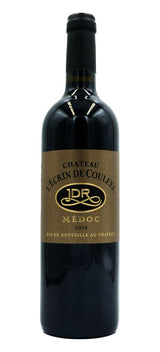David et Jerome Rebes
Chateau l'Ecrin de Couleys, Cuvee JDR, Cabernet Sauvignon, Medoc 2018
RedThe best cuvee of the estate, made with old vines (over 60 years old), Cuvee JDR gives the experience of a premium village Medoc. The nose is precise, aromatic, finely tight, and offers an array of jammy red and dark berries along with notes of licorice, oak, spices, and minerals. It reveals notes of blackcurrant, blackberry, small notes of violet associated with touches of small wild red fruits, lily as well as very discreet hints of Sichuan. The palate is fruity, well-balanced and offers minerality, juiciness as well as a fine acidulous frame, a small fat, a fine straightness, and tension. Longer on the palate, this wine delivers notes of fleshy and jammy red and dark berries, small notes of violet associated with light touches of chewy tobacco or licorice as well as discreet hints of mint, Sichuan pepper, and cardamom. The experience is round, extremely balanced, and lingering. A magnificent premium wine without the price tag for the Region! Certified HVE, sustainable agriculture. Unfiltered. Only sold by CeleriersCellar.com in the US.




